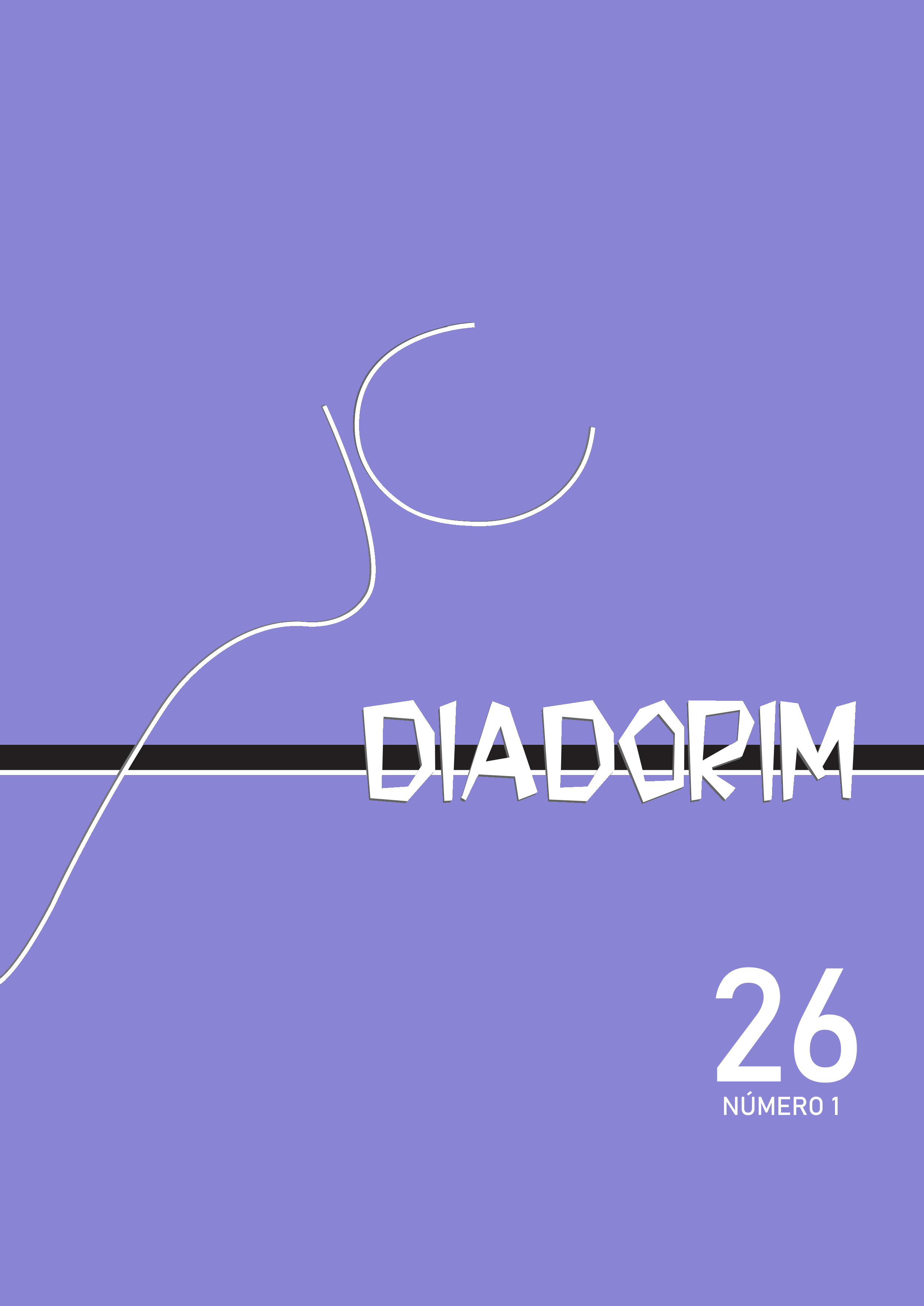Brazilian academic english and distribution of binomial possessives: A diasytematic analysis
DOI:
https://doi.org/10.35520/diadorim.2024.v26n1a63473Resumen
How is contact-based linguistic representation cognitively organized? Diasystematic ConstructionGrammar (DCxG) predicts that, in an integrative network, we may (over)generalize commonalities between systems in contact while also efficiently mapping linguistic units onto their more adequate context of use (cf. Goldberg, 2019; Höder, 2012; 2014; Höder, Prentice & Tingsell, 2020). We zoom in this broad issue considering one linguistic phenomenon: the distribution of the possessive binominal constructions, or more specifically, [NPpossessed] of [Npossessor]}and {[ NPpossessor] `s [Npossessed]}. In English as a first Language (EL1), the alternation between these two constructions is regulated by three overall criteria: animacity, size and givenness (cf. Stephanowitsch, 2020). In the interface between Brazilian Portuguese as a Native Language (Br-Pt/L1) and English as an additional language (EAL), would EAL speakers behave alike EL1 speakers, once Br-Pt/L1 has only one possessive binomial construction -{[NPpossessed] de [Npossessor]}(cf. Lisboa Jr., 2019)? Hypothesizing there would be a mismatch between EAL and EL1 speakers distributions due to Pt-Br/L1 interference, we carried out a study comparing the EAL and the native speakers` behavior, aiming to assess the contextual appropriateness of EAL generalizations. Initially, we compiled a database of the academic production by UFRJ`s English-major and statistically assessed its (non)convergence with native speakers` behavior. We annotated all instantiations of the possessive constructions in our dataset according to the three criteria presented herein .We, then, conducted a distributional analysis, based on the relation between expected and observed frequencies (EF e OF) and conducted a probabilistic analysis, namely a binomial logistic regression, to measure the statistical probability of these criteria as actual regulators of the alternation in EAL. We found that EAL distributional behavior is empirically convergent with native speakers' tendencies, in different degrees, for all criteria. However, these convergent tendencies are statistically relevant just regarding size.
Key words: Diasystematic Construction Grammar, binomial possessives constructions, linguistic contact.
Descargas
Descargas
Publicado
Número
Sección
Licencia

Esta obra está bajo una licencia internacional Creative Commons Atribución-NoComercial 4.0.
Transferência de direitos autorais - Autorização para publicação
Caso o artigo submetido seja aprovado para publicação, já fica acordado que o autor autoriza a UFRJ a reproduzi-lo e publicá-lo na Diadorim: Revista de Estudos Linguísticos e Literários, entendendo-se os termos "reprodução" e "publicação" conforme definição respectivamente dos incisos VI e I do artigo 5° da Lei 9610/98. O artigo poderá ser acessado pela internet, a título gratuito, para consulta e reprodução de exemplar do artigo para uso próprio de quem a consulta. Essa autorização de publicação não tem limitação de tempo, ficando a UFRJ responsável pela manutenção da identificação do autor do artigo.

A Revista Diadorim utiliza uma Licença Creative Commons Atribuição-NãoComercial 4.0 Internacional (CC BY-NC 4.0).

